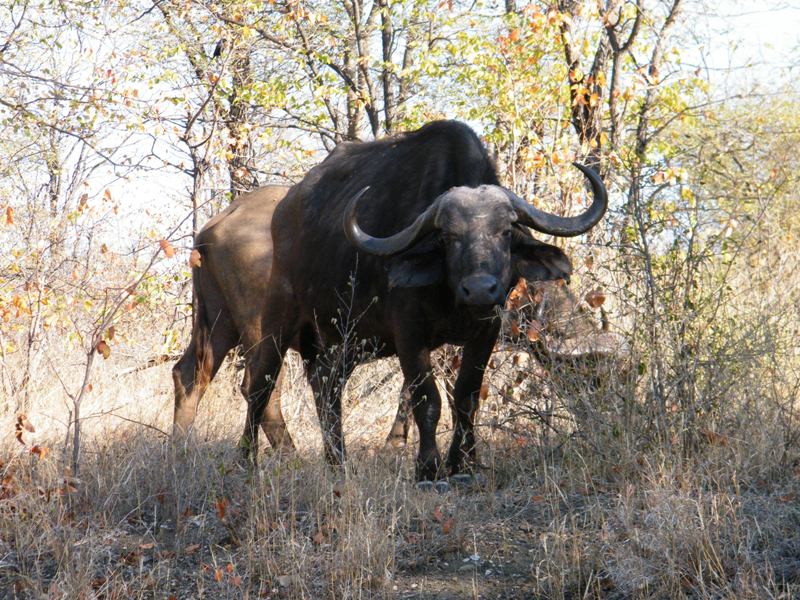African Buffalo
Posted: Sun Sep 30, 2012 6:07 pm
The aim of the thread is for all mites to join in and to :
* Endeavour to find and mark-off as many species in your animal book as possible.
* To highlight their different behavior, diets, breeding.
* To chat about their habitats and migration.
* Dig up all your pics you have and share with us.
* Take your camera on a hunting trip.
The African buffalo is a very robust species. - and one of the Big Five
Its shoulder height can range from 1 to 1.7 m (3.3 to 5.6 ft)
and its head-and-body length can range from 1.7 to 3.4 m (5.6 to 11 ft).
Compared with other large bovids, it has a long but stocky body and short but thickset legs, resulting in a relatively short standing height.
The tail can range from 70 to 110 cm (28 to 43 in) long.
Savannah-type buffaloes weigh 500 to 910 kg (1,100 to 2,000 lb), with males normally larger than females, reaching the upper weight range. A record-sized savannah-type male weighed 1,000 kg (2,200 lb).
The horns of African buffalo are very peculiar. A characteristic feature of them is the adult bull's horns have fused bases, forming a continuous bone shield referred to as a "boss", which can not always be penetrated even by a rifle bullet. From the base, the horns diverge, then bend down, and then smoothly curve upwards and outwards. The distance between the ends of the horns of large bulls is more than a metre.
The young buffalo horn boss forms fully only upon reaching the age of five to six years.
In cows, the horns are, on average, 10-20% smaller, and the boss is less prominent.
The African buffalo is one of the most successful grazers in Africa.
It lives in swamps and floodplains, as well as mopane grasslands and forests of the major mountains of Africa.
This buffalo prefers habitat with dense cover, such as reeds and thickets, but can also been found in open woodland.
While not particularly demanding with regard to habitat, they require water daily, so depend on perennial sources of water. The buffalo can live on tall, coarse grasses. Herds of buffalo mow down grasses and make way for more selective grazers.
When feeding, the buffalo makes use of its tongue and wide incisor row to eat grass more quickly than most other African herbivores. Buffaloes do not stay on trampled or depleted areas for long.
info : Wikipedia
* Endeavour to find and mark-off as many species in your animal book as possible.
* To highlight their different behavior, diets, breeding.
* To chat about their habitats and migration.
* Dig up all your pics you have and share with us.
* Take your camera on a hunting trip.
The African buffalo is a very robust species. - and one of the Big Five
Its shoulder height can range from 1 to 1.7 m (3.3 to 5.6 ft)
and its head-and-body length can range from 1.7 to 3.4 m (5.6 to 11 ft).
Compared with other large bovids, it has a long but stocky body and short but thickset legs, resulting in a relatively short standing height.
The tail can range from 70 to 110 cm (28 to 43 in) long.
Savannah-type buffaloes weigh 500 to 910 kg (1,100 to 2,000 lb), with males normally larger than females, reaching the upper weight range. A record-sized savannah-type male weighed 1,000 kg (2,200 lb).
The horns of African buffalo are very peculiar. A characteristic feature of them is the adult bull's horns have fused bases, forming a continuous bone shield referred to as a "boss", which can not always be penetrated even by a rifle bullet. From the base, the horns diverge, then bend down, and then smoothly curve upwards and outwards. The distance between the ends of the horns of large bulls is more than a metre.
The young buffalo horn boss forms fully only upon reaching the age of five to six years.
In cows, the horns are, on average, 10-20% smaller, and the boss is less prominent.
The African buffalo is one of the most successful grazers in Africa.
It lives in swamps and floodplains, as well as mopane grasslands and forests of the major mountains of Africa.
This buffalo prefers habitat with dense cover, such as reeds and thickets, but can also been found in open woodland.
While not particularly demanding with regard to habitat, they require water daily, so depend on perennial sources of water. The buffalo can live on tall, coarse grasses. Herds of buffalo mow down grasses and make way for more selective grazers.
When feeding, the buffalo makes use of its tongue and wide incisor row to eat grass more quickly than most other African herbivores. Buffaloes do not stay on trampled or depleted areas for long.
info : Wikipedia
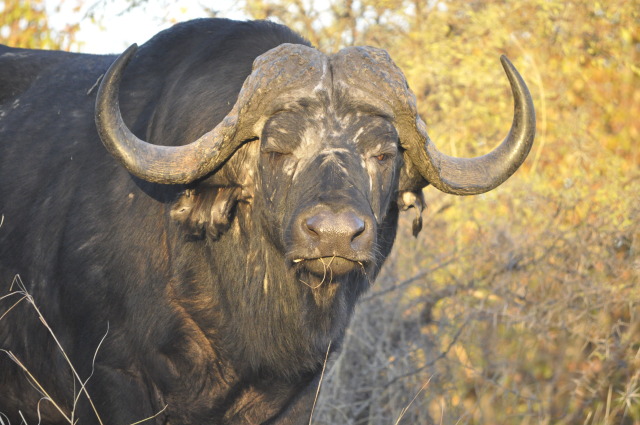

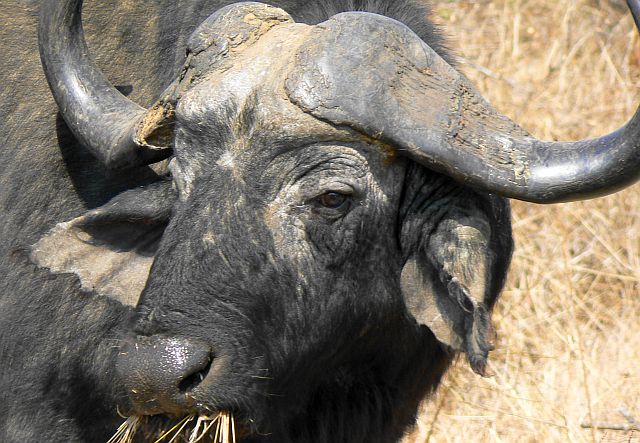 Kruger NP, Crocodile Bridge
Kruger NP, Crocodile Bridge iMfolozi section of Hluhluwe-iMfolozi Park
iMfolozi section of Hluhluwe-iMfolozi Park 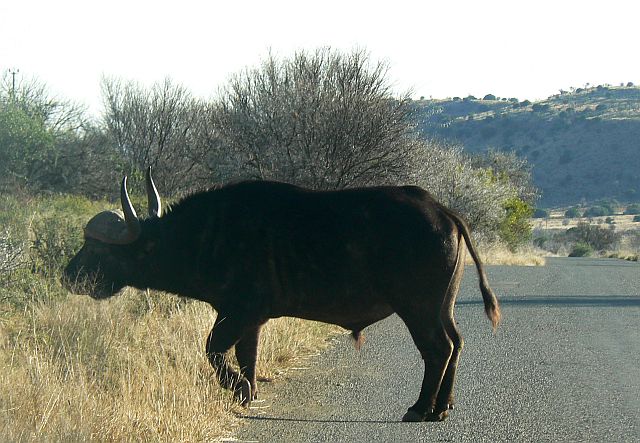 Mountain Zebra NP
Mountain Zebra NP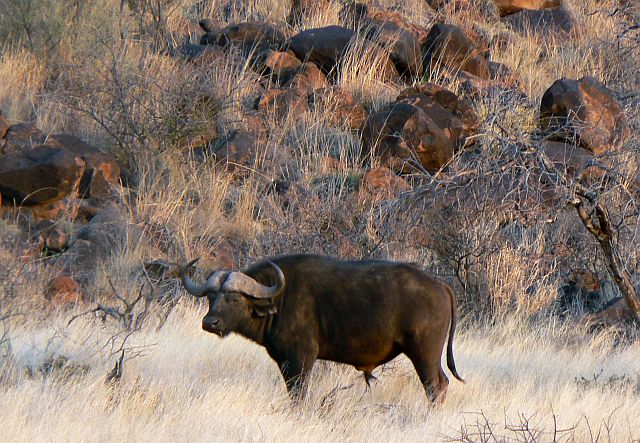 Mokala NP
Mokala NP
